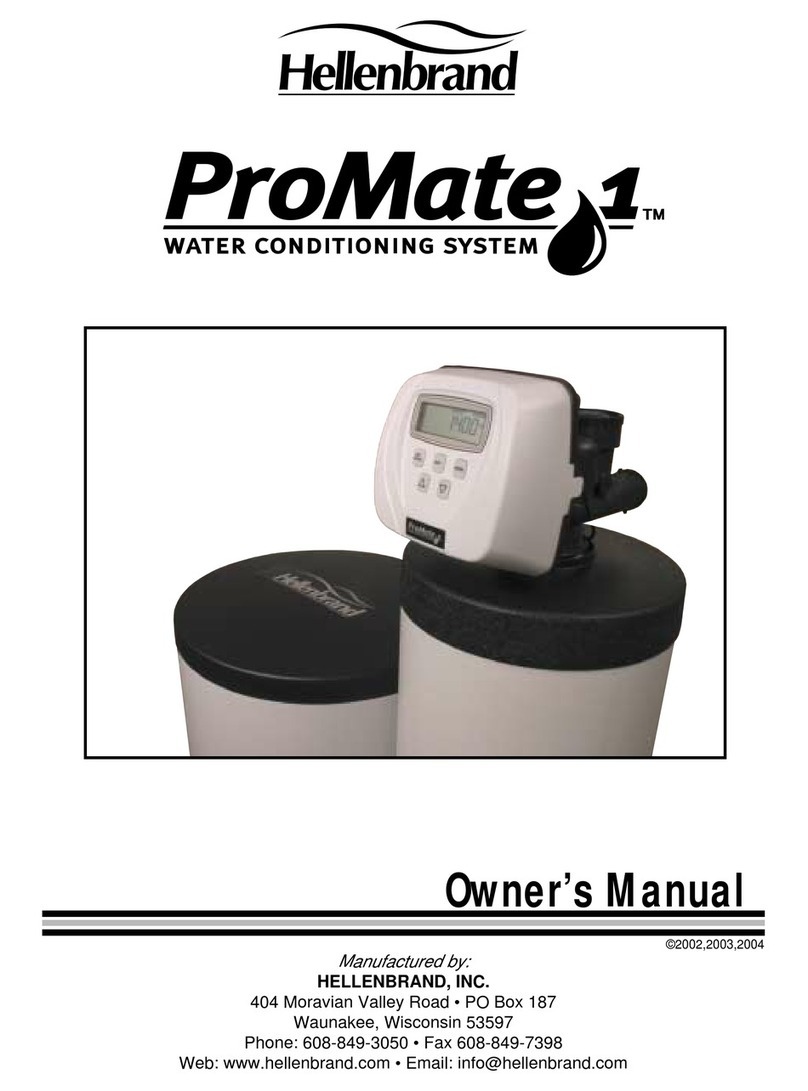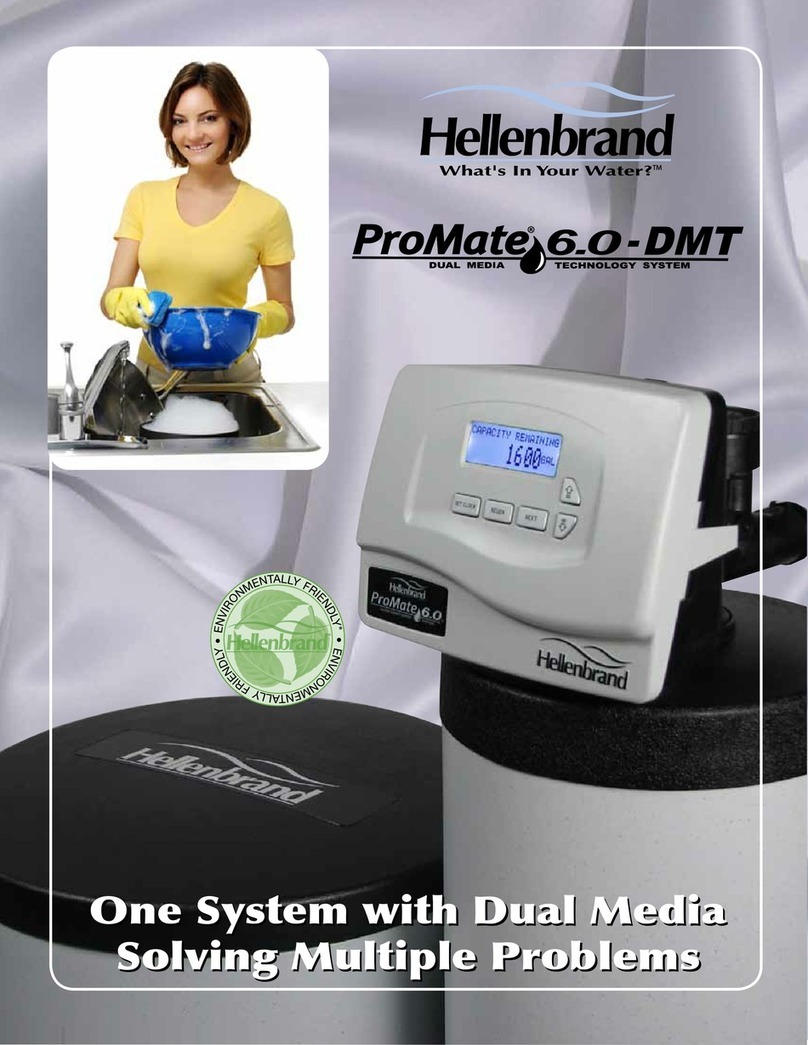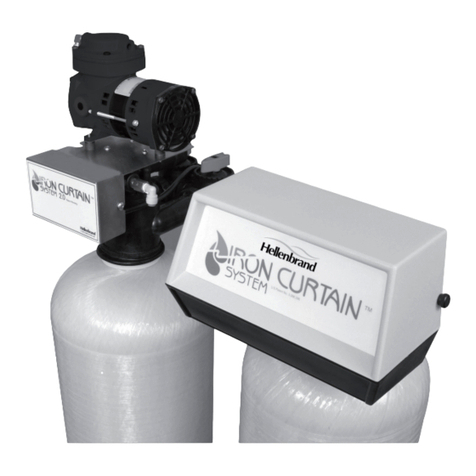
WATER SOFTENER PERFORMANCE DATA SHEET
Model 255-460i-075-844 255-460i-100-948
Rated Service Flow (gpm) 6.0 10.0
Pressure Drop at Rated
Service Flow Rate (psi) 9.0 15.0
Rated Capacity
(grains @ lb. of salt) 15, 362 @ 3.75
21,197 @ 7.5
23,148 @ 10.5
20,483 @ 5.0
28,263 @ 10.0
30,865 @ 14.0
Rated Efficiency
(grains/lb Salt @ lb. of salt) 4,096/lb. salt @ 3.75 4,096/lb. salt @ 5.0
Maximum Flow Rate During
Regeneration (gpm) 1.7 2.1
Sybron C-249NS
Ion Exchange Resin (cu. ft) 0.75 1.0
Backwash - GPM 1.7 2.1
Fast Rinse/Purge - GPM 1.7 2.1
Operating Pressure:20 -125 psi or 1.4 – 8.8 kg/Centimeter
2
, Operating Temperature: 34 - 100° F or 1.1 – 38° C
Acceptable Salt Type: Sodium Chloride – Pellet or solar salt for water softeners
All Systems above tested at 35psi +/- 5 psi, pH of 7.5 +/- 0.5, Capacity Testing Flow Rate = 50% of the rated service flow rate for the various size systems.
These water softener systems have been tested by WQA and conform to NSF/ANSI 44 for specific performance claims as verified and substantiated by test data. The rated salt efficiencies above
were also determined in accordance with NSF/ANSI 44 and are only valid at the salt dosage referenced above. An efficiency rated water softener is a demand initiated regeneration (DIR) softener
which also complies with specific performance specifications intended to minimize the amount of regenerant brine and water used in its operation. Efficiency rated water softeners shall have a rated
salt efficiency of not less that 3350 grains of total hardness exchanged per pound of salt (based on NaCl equivalency) (477 grams of total hardness exchanged per kilogram of salt), and shall not
deliver more salt than its listed rating. The rated efficiency of the water softener, the salt dosage at that efficiency, the capacity at that salt dosage and that of the efficiency is only valid at the stated salt
dosage. Efficiency is measured by a laboratory test described in NSF/ANSI 44. The test represents the maximum possible efficiency the system can achieve. Operational efficiency is the actual
efficiency achieved after the system has been installed. It is typically less than the efficiency due to individual application factors including water hardness, water usage, and other contaminants that
reduce the water softener’s capacity. These systems are not intended to be used for treating water that is microbiologically unsafe or of unknown quality without adequate disinfection before or after
the system. Refer to the system Installation and Service Manuals for set-up and programming instructions.
Contact your local Autotrol dealer for parts and service. See your owner’s manual for warranty information.
Important Notice: For conditions of use, health claims certified by the California Department of Public Health and replacement parts, see product data sheet
Iowa Requirement:
Seller: ______________________________________________________________ Date: _________________________
Buyer: ______________________________________________________________ Date: _________________________
Tested and Certified by
WQA against NSF/ANSI
Standard 44 & NSF/ANSI
372 for “lead free”
compliance.
The valve used on this unit is
Tested and Certified by WQA
to NSF/ANSI Std. 61 Section
8 for Material Safety Only
PENTAIR Residential Filtration, LLC
5730 North Glen Park Road Milwaukee, Wisconsin 53209
PHONE: (262)-238-4400
Pentair Residential Filtration, LLC
Autotrol®255 Valve / 400 Series Controls Service Manual SE12 • 3
































